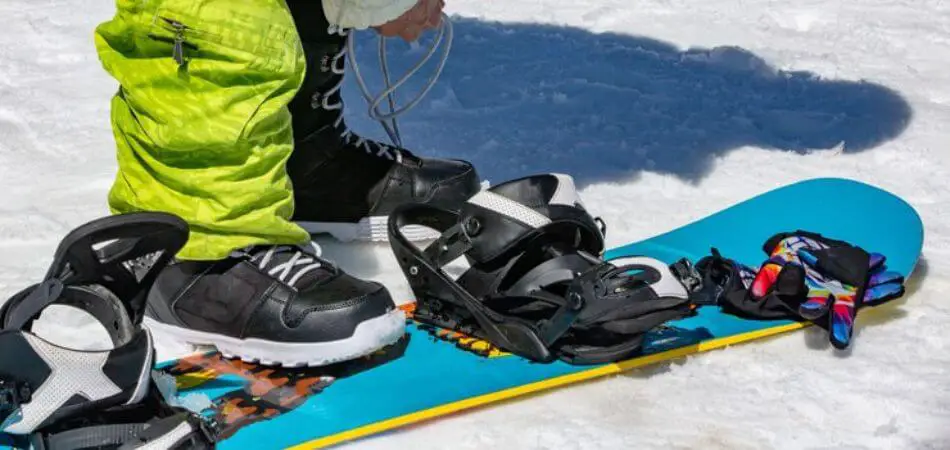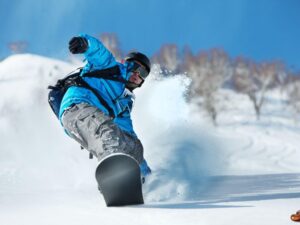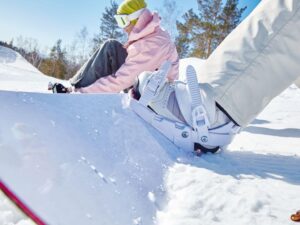Finding the perfect fit for your snowboard bindings is crucial for comfort, control, and overall enjoyment on the slopes. Getting the right size can feel like a daunting task with all the different sizing systems and factors to consider. But fear not! We’re here to guide you through the process.
In this guide, we’ll break down everything you need to know about snowboard binding sizes. From understanding your boot size to deciphering those pesky size charts, we’ll cover it all. By the end, you’ll be equipped with the knowledge to choose the perfect bindings for your snowboarding adventures.
Understanding Snowboard Binding Sizes
So, you’ve got your snowboard, but finding the right bindings can feel like solving a puzzle. Let’s break it down.
Snowboard binding sizes can be a bit confusing, as different brands use varying systems. Some use simple terms like small, medium, and large, while others go with numerical measurements. But don’t worry, we’ll clear that up.
Generally, your boot size is the starting point for determining binding size. However, it’s not the only factor. The flex of your boot, your riding style, and even your personal preference can all influence the best fit.
How to Measure Your Boot Size
Before we dive into size charts, it’s essential to accurately measure your boot size. This is the foundation for selecting the right binding size.
Here’s a simple guide:
- Put on your thickest snowboarding socks. These are the ones you’ll be wearing on the mountain.
- Stand with your back against a wall. Make sure your heels are touching the wall.
- Mark the wall at the longest point of your foot. This is typically the end of your big toe.
- Measure the distance from the floor to the mark. Use a tape measure for accuracy.
- Convert the measurement to Mondopoint. Most boot sizes are listed in Mondopoint, which is a European standard measured in centimeters. You can find online conversion tools if needed.
Remember, if you have half sizes, always round up to the next full size for your boot measurement.
Accurate boot measurement is crucial for finding the right binding size. So, take your time and ensure you get it right!
Next, we’ll dive into understanding snowboard binding size charts.

Snowboard Binding Size Chart
Understanding snowboard binding size charts can be a bit overwhelming, but don’t worry, we’ll break it down for you. Most binding manufacturers provide size charts to help you find the right fit. These charts typically correlate boot size with binding size.
However, it’s essential to remember that size charts are a general guideline. Factors like boot flex, riding style, and personal preference can influence the best fit. Always consider these factors when choosing your bindings.
While we can’t provide a specific size chart for every brand, we can give you tips on how to interpret them. Look for clear indications of boot size ranges and corresponding binding sizes. Some charts might also include information about rider weight, which can be helpful.
Remember, the best way to ensure a perfect fit is to try on bindings whenever possible. This allows you to feel the comfort and adjustability firsthand.
Snowboard Binding Size Chart for Different Brands
| Boot Size (US) | Burton | Salomon | Union | Ride |
|---|---|---|---|---|
| 4-6 | Small (S) | Small (S) | Small (S) | Small (S) |
| 6-8 | Medium (M) | Medium (M) | Medium (M) | Medium (M) |
| 8-10 | Medium (M) | Medium (M) | Medium (M) | Large (L) |
| 10-12 | Large (L) | Large (L) | Large (L) | Large (L) |
| 12-14+ | X-Large (XL) | X-Large (XL) | X-Large (XL) | X-Large (XL) |
This chart includes general size categories such as Small (S), Medium (M), Large (L), and X-Large (XL) for the selected brands.
In the next section, we’ll discuss how to find the perfect binding fit for you.
Stay tuned!
Finding the Perfect Binding Fit
Now that you’ve got a good understanding of your boot size and how to read a binding size chart, it’s time to find the perfect fit.
Trying on bindings before buying is ideal. This allows you to physically feel the comfort and adjustability of the binding. Pay attention to how the highback supports your ankle, and ensure the straps are comfortable and secure.
Once you’ve found a pair you like, take some time to adjust the bindings to your preferences. Most bindings allow you to adjust the angle and stance width. Experiment with different settings to find what feels best for you.
Remember, finding the perfect fit takes time. Don’t rush the process. A well-fitted binding can significantly enhance your snowboarding experience.
In the next section, we’ll discuss common mistakes people make when choosing binding sizes and how to avoid them.
Stay tuned!
Common Mistakes and How to Avoid Them
Choosing the wrong snowboard binding size is a common mistake, but it’s easily avoidable. Here are some pitfalls to watch out for:
- Ignoring Boot Flex: Different boots have different flex levels. A stiffer boot might require a slightly larger binding, while a softer boot might fit better with a smaller size.
- Disregarding Riding Style: Your riding style also plays a role. Aggressive riders might prefer a slightly larger binding for added support, while park riders might opt for a smaller size for more flexibility.
- Overlooking Personal Preference: Everyone’s feet are different. What feels good to one person might not feel good to another. Don’t be afraid to try different sizes and styles to find what works best for you.
By considering these factors and following the tips we’ve provided, you can avoid common mistakes and find the perfect binding size for your snowboarding adventures.
In the next section, we’ll wrap up with some final thoughts and encourage you to hit the slopes with confidence.
Stay tuned!
Conclusion
Finding the perfect snowboard binding size might seem like a daunting task, but armed with the right information, it becomes much easier. Remember, your boot size is a starting point, but factors like boot flex, riding style, and personal preference also play a crucial role.
By carefully measuring your boot size, understanding binding size charts, and trying on different bindings, you can find the perfect fit for your snowboarding adventures. Don’t be afraid to experiment and adjust your bindings until you find the optimal setup.
With the right bindings, you’ll experience increased comfort, control, and overall enjoyment on the slopes. So, hit the snow with confidence and shred those mountains!
FAQ’s
How do I know what size snowboard bindings to get
Measure your boot size: This is the most important factor.
Consult the size chart: Most snowboard binding manufacturers provide size charts online.
Consider your riding style: Aggressive riders might need slightly larger bindings for more control.
Try them on: If possible, try on bindings with your boots to ensure a comfortable fit.
How do I choose binding size?
t’s simple! Measure the length of your boot from heel to toe. Use this measurement to consult a binding size chart provided by the manufacturer. Most charts will have a specific size range for each boot length. Remember, it’s always better to err on the side of a slightly larger size for comfort and flexibility.
How wide should your snowboard binding be?
The widThe width of your snowboard binding should be based on your boot size. Generally, your binding should be about 1-2 centimeters (0.4-0.8 inches) wider than your boot. This allows for a comfortable and secure fit.
A wider stance can provide more stability, while a narrower stance can offer better maneuverability. Experiment with different widths to find what feels best for you.
Do snowboard bindings fit all boots?
No, snowboard bindings don’t fit all boots. The size and shape of your boots are crucial factors to consider when choosing bindings. Most bindings are designed to fit specific boot sizes and brands. It’s important to consult the manufacturer’s size chart and recommendations to ensure a proper fit.







